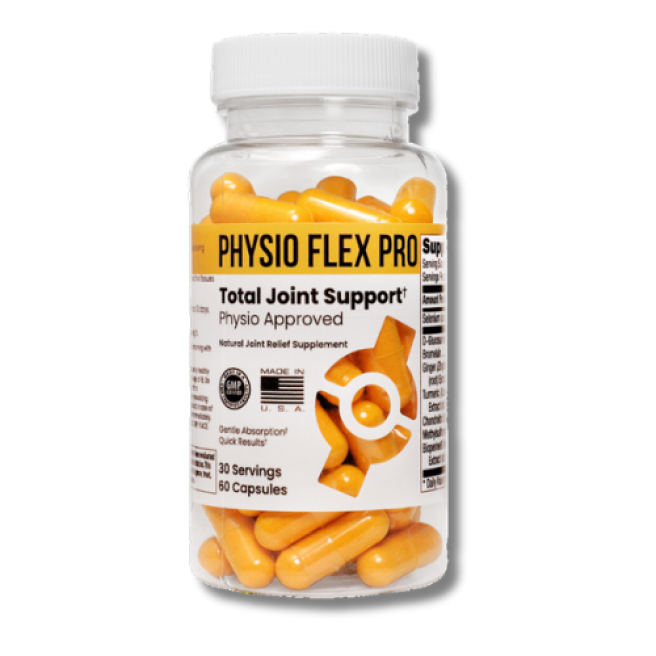Stop for a moment and try to imagine your day without your thumbs. Can't pick up your coffee cup. Can't text. Can't grip your steering wheel. Can't even button your shirt.
Your thumbs are involved in up to 50% of your hand function, yet they're probably the most overlooked joints in your body - until they start screaming for attention.
If you're reading this with aching thumbs, you're not alone. Thumb joint pain affects over 40% of people over 40, and it's rapidly increasing in younger populations thanks to our device-heavy lifestyles.
The good news? Most thumb pain is preventable and treatable when you understand what's really happening and take the right action.
Why Your Thumbs Are Uniquely Vulnerable
The Anatomy of Trouble
Your thumb is an engineering marvel - and a potential disaster waiting to happen. Unlike your other fingers, your thumb has:
- Two joints instead of three (but they work twice as hard)
- A unique saddle joint at the base that allows 360-degree movement
- 17 muscles controlling its movement (more than any other digit)
- Constant load-bearing responsibility in nearly every hand activity
This complexity makes thumbs incredibly useful - and incredibly vulnerable to wear and tear.
The Modern Thumb Crisis
Our ancestors used their thumbs for grasping tools and food. We use ours for:
- Texting (average person: 2,617 times per day)
- Scrolling social media
- Gaming with controllers
- Typing on keyboards
- Gripping steering wheels for hours
The result? We're putting repetitive stress on joints that weren't designed for this level of constant, precise movement.
The 5 Main Causes of Thumb Joint Pain
Cause #1: "Tech Thumb" - The Digital Age Epidemic
What's Happening: Repetitive thumb movements from texting, scrolling, and gaming create micro-trauma in the joint tissues.
The Numbers:
- Average smartphone user taps their screen 2,617 times per day
- 76% of that interaction involves thumb movement
- Gaming can involve 300+ thumb movements per minute
Why It Hurts: The base of your thumb (CMC joint) wasn't designed for rapid, repetitive pinching motions. Over time, this leads to inflammation and cartilage wear.
Cause #2: Grip Strength Imbalances
What's Happening: Modern life creates strong gripping muscles but weak supporting muscles around the thumb joint.
Common Culprits:
- Prolonged computer mouse use
- Carrying heavy bags with handles
- Repetitive gripping activities (tools, sports equipment)
- Poor ergonomics in daily activities
Why It Hurts: When some muscles are overworked and others are weak, it creates uneven pressure on the thumb joints, leading to pain and dysfunction.
Cause #3: Age-Related Joint Changes
What's Happening: The cartilage in thumb joints naturally wears down over time, particularly in the CMC (carpometacarpal) joint at the base of the thumb.
The Reality:
- Thumb arthritis affects 1 in 12 women over 50
- Men are affected less frequently but still at significant rates
- Early signs often appear in the 40s
Why It Hurts: As cartilage thins, bones can rub together, causing pain, stiffness, and eventual joint deformity if left untreated.
Cause #4: Previous Injuries and Overuse
What's Happening: Old thumb injuries (sprains, fractures, dislocations) can lead to long-term joint problems, even if they seemed to heal properly.
Hidden Damage:
- Ligament stretching from "jammed" thumbs
- Micro-fractures that weren't properly diagnosed
- Scar tissue affecting joint movement
- Compensatory movement patterns
Why It Hurts: Previous trauma can alter joint mechanics, leading to uneven wear and chronic pain years later.
Cause #5: Inflammatory Conditions
What's Happening: Systemic inflammation from various sources can specifically target thumb joints.
Contributing Factors:
- Poor diet high in inflammatory foods
- Chronic stress
- Autoimmune conditions
- Hormonal changes (especially in women during menopause)
Why It Hurts: Inflammation breaks down cartilage and irritates joint tissues, creating pain and stiffness that can be worse in the morning or after periods of inactivity.
The 7 Solutions That Actually Work
Solution #1: The Thumb Reset Protocol
The Fix: Daily thumb stretches and mobility exercises:
- Thumb Extension Stretch: Hold thumb back gently for 15 seconds
- Thumb Flexion Stretch: Bend thumb across palm, hold 15 seconds
- Thumb Circles: Gentle circular movements, 10 each direction
- Opposition Stretch: Touch thumb to each fingertip, hold 3 seconds each
When to Do It: 2-3 times daily, especially before heavy thumb use
Timeline: Most people notice improved flexibility within 1-2 weeks
Solution #2: Ergonomic Intervention
The Fix:
- Phone: Use voice-to-text, hold phone with both hands, take frequent breaks
- Computer: Ergonomic mouse, proper wrist positioning, regular stretching
- Daily Activities: Use larger grips on tools, alternate hands when possible
Pro Tip: The "20-20-20 rule" - Every 20 minutes, take a 20-second break and move your thumbs through their full range of motion.
Timeline: Immediate relief during activities, with cumulative benefits over 2-4 weeks
Solution #3: Strengthening the Support System
The Fix: Targeted exercises to strengthen thumb-supporting muscles:
- Thumb Pinch Strengthening: Pinch soft ball or putty, hold 5 seconds, repeat 10 times
- Thumb Opposition: Touch thumb to each finger with resistance band
- Wrist Strengthening: Strong wrists support healthy thumbs
Why It Works: Stronger supporting muscles take pressure off the joints themselves.
Timeline: Strength improvements typically seen in 3-4 weeks with consistent practice
Solution #4: Anti-Inflammatory Approach
The Fix:
- Nutrition: Increase omega-3s, reduce processed foods, add anti-inflammatory spices
- Supplementation: Comprehensive joint support with anti-inflammatory compounds
- Lifestyle: Adequate sleep, stress management, regular movement
The Physio Flex Pro Connection: The combination of turmeric, ginger, and other anti-inflammatory compounds in comprehensive joint support can specifically help reduce the inflammation contributing to thumb pain.
Timeline: Dietary changes show effects in 2-3 weeks; comprehensive supplementation typically shows benefits within 25 days
Solution #5: Activity Modification
The Fix: Smart adjustments to daily activities:
- Use voice commands instead of typing when possible
- Take regular "thumb breaks" during repetitive activities
- Alternate between different gripping patterns
- Use adaptive tools when available
Timeline: Immediate reduction in pain-causing activities, with healing benefits accumulating over weeks
Solution #6: Heat and Cold Therapy
The Fix:
- Cold: For acute pain or after heavy thumb use (10-15 minutes)
- Heat: For stiffness, especially in the morning (15-20 minutes)
- Contrast Therapy: Alternate hot and cold for chronic issues
Timeline: Immediate relief during treatment, with cumulative benefits when used consistently
Solution #7: Professional Intervention When Needed
The Fix: Know when to seek help:
- Pain lasting more than 2 weeks despite self-care
- Visible joint deformity
- Inability to perform daily activities
- Numbness or tingling
Options: Physical therapy, occupational therapy, medical evaluation for severe cases
The Prevention Protocol: Don't Wait for Pain
Daily Habits for Thumb Health:
- Morning thumb mobility routine (2 minutes)
- Ergonomic awareness throughout the day
- Regular movement breaks during repetitive activities
- Evening anti-inflammatory support
- Proper sleep positioning (avoid sleeping on hands)
Weekly Maintenance:
- Assess thumb flexibility and strength
- Review and adjust ergonomic setups
- Plan activity modifications for heavy-use periods
When Thumb Pain Signals Bigger Issues
While most thumb pain is mechanical and treatable, certain symptoms warrant immediate professional attention:
- Sudden, severe pain following injury
- Visible joint deformity or swelling
- Numbness or tingling extending into the hand
- Pain that wakes you at night
- Progressive weakness in grip strength
The Bottom Line
Your thumbs are your most important digits - treat them that way. The combination of modern technology use and natural aging creates a perfect storm for thumb joint problems, but they're largely preventable and treatable with the right approach.
The key is early intervention. Don't wait until you can't grip your coffee cup to start caring for your thumbs.
Start with the Thumb Reset Protocol, make ergonomic adjustments, and consider comprehensive joint support to address any underlying inflammation. Your thumbs - and your daily quality of life - will thank you.







